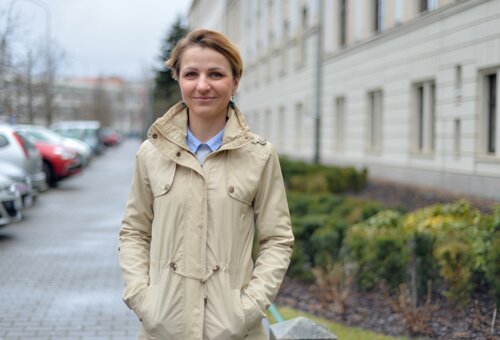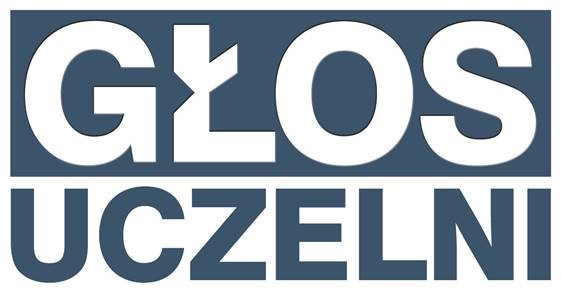
Maria Soroko – from UPWr to the USA on a Fulbright Scholarship
Maria Soroko from the Institute of Horse Breeding and Equestrian Sciences at UPWr is going on a Fulbright Scholarship in August. She talks to us about her research, studies abroad and horse physiotherapy.
You have become a Fulbright scholar because…?
I have always wanted to go to the USA to a prestigious university where I could learn form the best scientists working with animals. That’s where the scholarship idea came from and it was not necessarily about Fulbright. I was just looking for a possibility to get on a several-month-long scholarship in order to use my knowledge and expertise I gained while working at the Faculty of Biology and Animal Science.
You are already a specialist in the field of horses. This internship shows, however, that we have to learn all our lives
Of course, we never stop building our experience. Being an expert, I’m obliged to constantly expand my knowledge in order to keep that position. By going to the USA and cooperating with the best I hope to compare my skills to other specialists and make contacts in order to build an international research team. For two years I’ve been employed as an assistant professor at the Wrocław University of Environmental and Life Sciences so my experience connected with didactics and research is still in its initial stage. That’s why it is a perfect moment in my career to learn from the best.
When choosing to study at the Faculty of Biology and Animal Science did you have a specific plan for horses? After all you have been riding since childhood.
Yes, I started to ride horses as a young girl and when I was making a decision concerning my studies I knew that I wanted my education to have something to do with these animals. But, frankly speaking, I didn’t have any clear idea and when the moment came, I thought about horse rehabilitation which was virtually inexistent in Poland. My parents directed my towards physiotherapy at the University School of Physical Education. I wasn’t admitted however, and I chose the Wrocław University of Environmental and Life Sciences. This is how I found myself studying Zootechnics.
And was it “It”?
At zootechnics I didn’t feel that I was fulfilling my potential. After getting my engineer’s degree I decided to continue my MA studies at the Aberystwyth University in Wales at the faculty of Equine Science – horse management and husbandry and in 2010 I got my MSc degree in Equine Science. I later complemented my education abroad with specialist courses in horse physiotherapy. In Poland there were no such possibilities at that time. I later started to promote my qualifications in horse rehabilitation through massage here in Poland.
Where virtually nobody was doing it.
It’s true that a few years ago horse rehabilitation wasn’t common in Poland but in the last few years some schools have been set up which are now educating more and more specialists in the field. It’s worth noting that in the years 2012-2013 the job of zootherapist was officially registered for the Ministry of Family, Labour and Social Policy, the Centre for Human Resource Development. The profession concerns physiotherapy of both big and small animals.
Why in Poland where the horse is of almost symbolic importance, there was no rehabilitation like in England?
In Poland we mainly develop the sports horse breeding. We also have a significant role in Arabian horse breeding. However, when it comes to management and rehabilitation of these animals, we are just beginners. I think, it’s a question of society’s wealth. In the better developed countries of Western Europe, e.g. in Great Britain and Germany, animal physiotherapy is a standard in horse care.
What is zoophysiotherapy?
It’s simply animal physiotherapy based on human physiotherapy where the treatment includes massage, physical therapy and kinesiotherapy.
You are a rather small woman and the horse is not the same size as a dog or cat. How do you massage such a big animal? After all, this procedure is often painful, though it eventually brings relief.
A horse which experiences discomfort, tensions and pain is very sensitive to touch and that’s why during the massage we don’t use deep techniques on soft tissues. The first procedure is always more painful for the animal but after some repetitions, as the tension decreases, we can press the tissue harder. The relief in deeper layers comes when we provide the animal with more movement and suitable training.
When a sick horse comes to you, do you stand in front of it and say “I won’t hurt you?” After all it’s an animal which forms a relationship with man.
It all depends what horse we are talking about. Private horses of one owner are usually trusting and relatively calm. I sometimes deal with racehorses and they are usually more nervous and reserved towards people. It all depends on its previous experiences. But there are some rules: to be calm, not to be afraid of the horse and to remember about safety rules.
How do you tell that the massage works?
The horse breathes more slowly, closes its eyes, lowers its head. It’s just relaxed and that’s, after all, what it’s all about.
Let’s come back to Fulbright. You are going to the United States with some specific research plans.
Yes, I’m going to carry out research on animal thermoregulation. I’ll use a thermal imaging camera which is able to receive infrared radiation emitted from the body surface. This gives a way of non-invasive imaging of the temperature all over the animal’s body surface depending on the environment it’s in.
You check how the temperature changes depending on different factors such as inflammation or physical effort?
That’s correct. My doctoral thesis was about using thermography for measuring the body temperature of racehorses during long-term training. The examination concerned areas of horse’s back and distal parts of its front legs, whose injuries are the most common cause for horses’ elimination from active training. The horse’s back is directly burdened by the rider and this load causes changes in temperature.
Can these changes cause any inflammations?
Yes, and we are able to diagnose them even in a subclinical state when an animal has no visible symptoms of an inflammation but the part prone to injuries gets higher perfusion which you can’t feel with your hand. Thermal imaging camera is sensitive enough to detect 0.1˚C change in temperature. That’s how we are able to observe abnormalities in animal’s organism before they develop into a full illness.
What advice would you give to students considering applying for scholarships abroad?
I’d tell them to go for it. When I talk to students I observe that they mostly lack courage. When I went to study abroad I was sure that I know English well. But it turned out that I couldn’t understand a lot of things. At first I thought that I wouldn’t manage but I sat down and said to myself “why not?” You’ve chosen these studies and this is a test.” I passed that test, but I know you have to take the next ones and then you can do things which give you satisfaction and which you can share with others.










